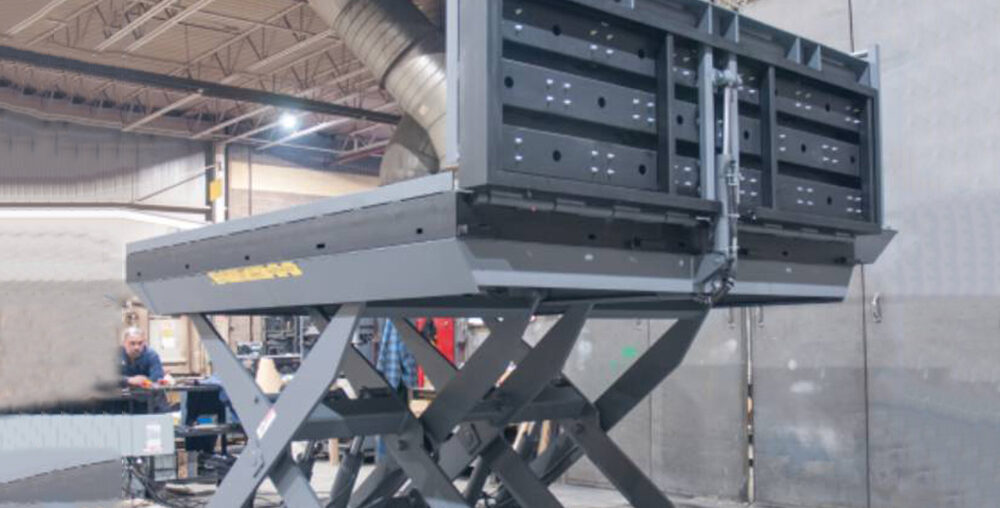The majority of workplaces in industrial areas are now upgrading their task completion methods with the evolution of existing mechanical and lifting solutions. One such innovation is a lift table, used in many industrial areas to boost work productivity. These tables are designed to lift heavy loads with less effort and act as an indispensable tool. These tables act as a game-changer in achieving the goals. There are numerous types of lifting tables that offer different benefits and employ distinct mechanisms. However, we’ll talk about hydraulic lifting tables in this article and how they act as a time-saver and improved productivity solution.
What are Hydraulic Lift Tables?
Hydraulic lifting table, powered by hydraulic systems, are designed to lift, lower, and load heavy loads. They play a crucial role in facilitating the movement and handling of materials in industrial and commercial settings, ensuring operations such as packing, loading, and unloading are performed effectively and, most importantly, safely. Their quick operation reduces the need for multiple workers for a single task, thereby minimizing the risk of injuries associated with manual lifting.
Some benefits offered by hydraulic lift tables:
- Because of their extensive lifting capabilities, these tables can lift heavy loads, equipment, and machinery.
- These tables are designed with a hydraulic control mechanism, allowing you to alter the height to meet your requirements.
- The lift table can position loads comfortably. With this, the need to do manual lifting gets reduced.
- Another advantage of hydraulic lift tables is their space-saving design. When not in use, these tables can be folded or stowed quickly, allowing them to occupy less floor space in the workplace, a key consideration for warehouse managers and industrial professionals.
- The material handling procedures of these tables move more quickly and increase production by eliminating downtime from human lifting.
How Do They Work?
Hydraulic tables operate by using a hydraulic fluid to lower and raise the platform of a table. The hydraulic pump forces in and out the fluid of a cylinder, separating the table’s scissor legs and lifting the platform. These scissor legs are attached to the end of a platform and force it to rise. These working tables are based on Pascal’s law (pressure changes in the confined fluid are transmitted equally throughout the fluid in every direction). Multiple industries use these tables and offer various benefits compared to other lift tables.
What are the Components of a Hydraulic Lift Table?
Every component of the lift table is significant for ensuring efficient and reliable function.
- One of the components, the Pump, applies pressure to the fluid and creates the force to lift heavy equipment and machinery. The pumps, like gear, piston, and vane, generate high pressure and drive the fluid into the cylinders.
- The Fluid Reservoir, another vital component, plays a crucial role in maintaining the lift table’s performance. It regulates the fluid’s temperature, preventing overheating during usage, and acts as a storage tank, ensuring a consistent supply of fluid for smooth operations.
- Another crucial component is the Cylinder, which serves as a lifting mechanism. The cylinder’s fluid forces the piston up to lift the load. The cylinder design and size ensure the capacity of a list.
- The other component, the Control Valve, handles the fluid flow. This element manages the speed and direction of a lift and is responsible for its proper positioning.
Real-World Applications
- Automotive industries, such as repair centers and car manufacturing plants, use hydraulic lift tables. These tables lift vehicles and ensure proper maintenance, as well as facilitate repair operations.
- Hydraulic lift tables, not just limited to the automotive industry, find their place in the construction sector. They lift a variety of materials, from concrete panels to steel beams, and even aid in the construction of higher building levels.
- Most warehouses use hydraulic lifting tables to manage inventories, such as lifting heavy goods and other items. They also efficiently handle the task of loading and unloading from trucks.
- The manufacturing industry uses lifting tables to lift heavy equipment and machinery. Additionally, they support the production processes via precise positioning.
Need Hydraulic Lift Tables for Workplace Needs?
If you also want to leverage lift tables and boost productivity for your workplace, get in touch with reputable brands or companies. There are a wide range of brands that offer mechanical and lifting solutions as per your business needs. You can go through their online websites to learn more about the product by checking descriptions, customer reviews and ratings. Look for different types and mechanisms for a specific lifting table. Don’t forget to check the maximum capacity of a lift table, as this can ensure how much load a table can handle in terms of heavy equipment, machinery, etc.
Final Words!
Hydraulic lift tables have transformed the way of lifting and moving heavy objects. They are the vitally important tools in many industries. The integration of smart technology, advanced features, and reliable operations of these lift tables improves efficiency, decreases downtime, and enhances the safety of the workers.



